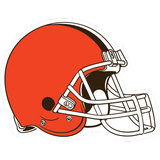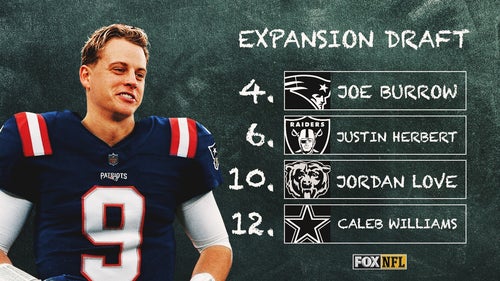
What is wrong with the Browns' running game?
Sep 25, 2016; Miami Gardens, FL, USA; Cleveland Browns running back Duke Johnson (29) stiff arms Miami Dolphins cornerback Xavien Howard (25) during the second half at Hard Rock Stadium.The Miami Dolphins defeat the Cleveland Browns 34-20 in overtime. Mandatory Credit: Jasen Vinlove-USA TODAY Sports
The Cleveland Browns’ running game has disappeared over the past two weeks. Here is a breakdown of what is going well and no so well with running the ball.
The Cleveland Browns have forgotten how to run the ball. In two weeks’ time, the Browns have gone from first in the league in rushing to eleventh. What happened to bring the Browns running game to a screeching halt?
Unfortunately, a lot has been going wrong for the Browns in the running game. But you are in luck. I am here to break it all down for you.
Merry-go-round offensive line
The most obvious answer to why the Browns running game has fallen apart is the offensive line merry-go-round. The Browns have yet to start the same offensive line two weeks in a row since Week 2.
Center is a mess. When Cameron Erving was healthy, his play on the field needed a lot of improvement. He was not communicating well with John Greco leading to missed blocks and pressure up the middle. He struggled to identity the “mike” in order to set the blocking scheme.
Josh McCown was the unlucky beneficiary of Erving’s play. Now that he is back at center, the same issues reared their ugly heads against the Tennessee Titans. On several occasions, lack of communication with Greco and Alvin Bailey led to vicious hits on the quarterback. Austin Reiter did an amazing job filling in for Erving. Unfortunately, his ACL tear ripped a solid center out of the lineup.
John Greco is a good right guard. But he is not a good center. The Browns failure to plan for a backup center has really hurt the running game. Neither Erving nor Greco have been able to block effectively at center in the running game. They both have trouble capturing their man in zone schemes. They both also struggle to fill the void left by pulling guards. Center is a major black hole the Browns must address either through the draft, getting Reiter healthy or coaching Erving into an effective player.
The loss of Joel Bitonio has hurt the interior line. The guards and center make up the interior line. The interior has little stability since Week 2. Greco has played guard and center. The end result is a general lack of cohesion among the group. Nobody in the interior can get comfortable with what they are doing and who should be blocking who.
Alvin Bailey did an adequate job filling in for John Greco when he moved to center, but he looked lost playing left guard. Part of the issue could be Greco’s ability to call out protections versus Erving’s struggles. He consistently failed to capture his man in zone blocking. He also failed to get initial contact on the man over him in order to allow the center to capture the man.
Oct 16, 2016; Nashville, TN, USA; Cleveland Browns running back Isaiah Crowell (34) is tackled by Tennessee Titans cornerback Bennett Okotcha (23) after a short gain in the first half at Nissan Stadium. Mandatory Credit: Christopher Hanewinckel-USA TODAY Sports
Teams stuffing the box
Another reason the Browns running game is suffering is due to opposing teams stuffing the box. Stuffing the box means the opponent has eight or more players lined up between the offensive tackles and less than five yards off the ball.
By putting eight or more players in the box, teams are looking to outnumber the offense at the point of attack. The logic is that if there are more players to defend the run than the offense can block, then the defense should be able to stop the run. It is simple math. Five or six people cannot block eight.
As a concept, the power run scheme tries to put more people at the point of attack than the defense in order to gain a numbers advantage in their favor. First, there is a double team at the point of attack. Second, a pulling a guard, tackle or both tries to kick out a defender opening a hole or sealing an edge depending on the scheme. A numbers advantage can also be gained by using a fullback, H-back or a crack back block by a big physical wide receiver like Terrelle Pryor.
Defenses have been stuffing the box to negate a numbers advantage brought on by the power run scheme. If there are more people to defend, the offense cannot double team, kick out or seal an edge.
How can offenses counter this? It is actually quite easy to counter a team stuffing the box. First, because stuffing the box is done (usually) by bringing a safety up, the easiest way is to throw the ball deep. The Browns did this their first offensive play from scrimmage when Cody Kessler hit Gary Barnidge for a long gain. Second, change the running scheme from power run to zone run.
The problem for the Browns in the zone running scheme have been detailed above. The zone run scheme effectively shifts the entire offense one direction, purposely leaving one or two players unblocked who mostly likely cannot make the play anyway. If the backside chaser becomes a factor in the run game, the offense can run a read-option to take advantage of it.
The zone scheme negates the advantages of an eight-man box by taking one or two defenders out of the play by the scheme itself. Adding an option wrinkle to the scheme, offenses can even remove any player they want from the defense. Any can be optioned at any time.
But to make such and offense effective, the Browns would need a player like Robert Griffin III and an offensive line that focuses on zone blocking. Kessler is not a read-option quarterback nor can the offensive line zone block.
Thus, beating the stuffed box with zone concepts failed miserably last week against the Titans.
Oct 16, 2016; Nashville, TN, USA; Cleveland Browns tight end Gary Barnidge (82) is tackled by Tennessee Titans inside linebacker Avery Williamson (54) during the first half at Nissan Stadium. Mandatory Credit: Jim Brown-USA TODAY Sports
Play-action passing
Play-action passing is another option to beat a stuffed box. The Browns tried this the entire game against the Titans last week. Although it was effective in the short-term, it had long-term negative consequences due to the inability to protect the quarterback.
Almost all the major hits put on Kessler were the result of a missed assignment on a play-action pass. Either the offensive line failed to execute the run blocking scheme effectively as a part of the play action or the receivers failed to hold blocks long enough to protect Kessler before going out on routes.
Nonetheless, the Browns tied to use football Tae-Kwon Do by using the eight man box against their opponent. Unfortunately, teams blitzed more people than the Browns could block leading to hits on Kessler.
This option did not work for the Browns.
Edge and Perimeter Blocking need work
A major part of the Browns’ success in the running game has been their ability to block on the perimeter. Blocking on the perimeter usually refers to the blocking of wide receiver in space, tight ends on the end of the line of scrimmage and any blocking by backs out of the backfield in space.
During the preseason, perimeter blocking was terrible. Neither Gary Barnidge nor Terrelle Pryor run blocked effectively. As a result, the Browns had no running game during the preseason.
Once the season came along, perimeter blocking picked up. Terrelle Pryor even received penalties for excessive roughness and blocking downfield early in run blocking situations. Gary Barnidge also picked up his run blocking. He began to block effectively on the edge of the line.
However, over the past two weeks, both Barnidge and Pryor have missed significant blocks on the edge. Further compounding the issue is that if Pryor could crack back upon a safety in the box, the outside power game would be wide open. By putting eight in the box, a receiver is usually one-on-one outside the formation. Any semblance of blocking on the edge of the formation and on the perimeter will fix the run game immediately. Two or three successful runs outside and the safeties will magically disappear from the box.
More from Dawg Pound Daily
It is hard to overestimate the loss of Randall Telfer. My initial reaction to Telfer’s injury was, “there goes the run game.” Sadly, this has proven true. Telfer is an exceptional run blocker on the edge of the formation. Getting him back this week will help secure the power run game, but only if the Browns can find a guard who can kick out the last man on the line of scrimmage.
The Browns running game has disappeared because the offensive line is unstable, unable to effectively zone block, cannot protect Kessler in play-action passes and the dearth of blocking on the edge and perimeter.
All of these issues are fixable. The left guard position needs solidified by either correcting Bailey’s technique or getting Jonathan Cooper ready to go. Cam Erving needs to figure out line calls and be more technically sound run blocking. Pryor and Barnidge need to block better and Randall Telfer’s return will help tremendously.
It is a lot to fix.
This article originally appeared on











